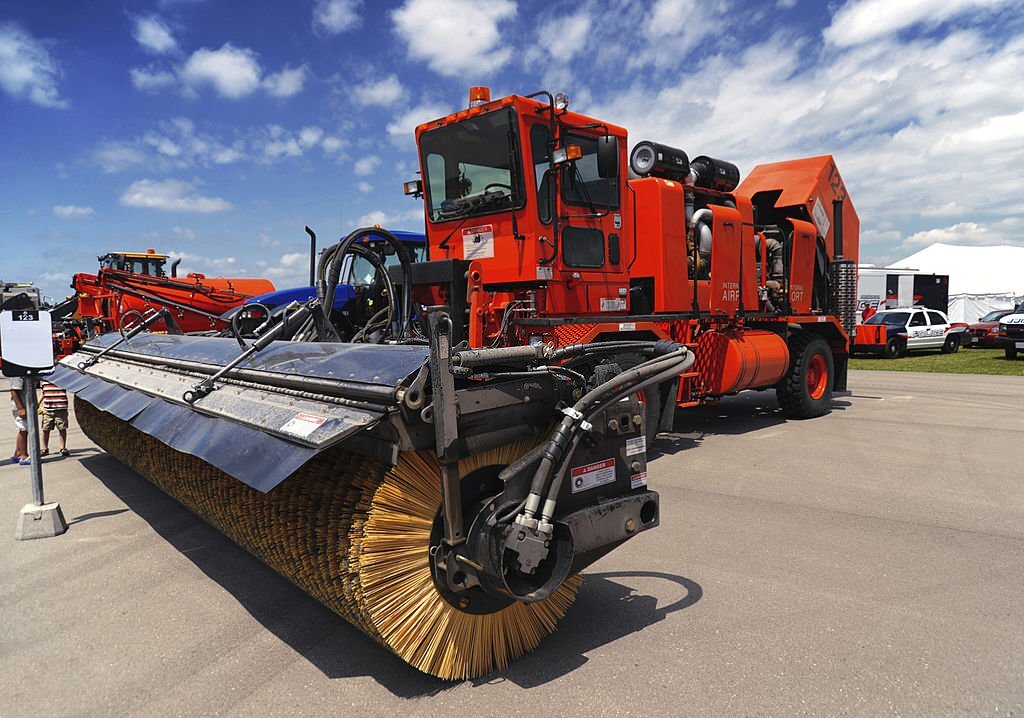
In the high-stakes world of heavy equipment industries, where every component’s reliability and longevity matter, the role of maintenance cannot be overstated. One often overlooked aspect of this maintenance regimen is the use of sweeper machines. These specialized cleaning devices do more than just keep industrial sites clean; they play a vital role in extending the lifespan of heavy equipment components. In this article, we will delve into how sweeper machines contribute to the longevity of heavy equipment components.
1. Preventing Abrasion and Wear

Heavy equipment components, such as engine parts, hydraulic systems, and bearings, are vulnerable to abrasion and wear due to the presence of grit, dirt, and debris in industrial environments. Sweeper machines help prevent premature wear by:
- Removing Abrasive Particles: Sweeper machines efficiently remove abrasive particles from the equipment’s vicinity, reducing friction and wear on moving parts.
- Maintaining Lubrication: Clean components are less likely to accumulate debris that can interfere with proper lubrication, preserving the integrity of crucial moving parts.
- Minimizing Contaminants: Sweeping away contaminants prevents them from infiltrating sensitive components, reducing the risk of damage.
2. Reducing Corrosion Risks

Heavy equipment components are often exposed to the elements, making them susceptible to corrosion, especially in industrial environments with high humidity or chemical exposure. Sweeper machines help mitigate corrosion risks:
- Moisture Management: Sweeping removes standing water and moisture, which can lead to corrosion over time.
- Chemical Contaminant Removal: Sweeper machines remove chemical residues that can accelerate corrosion on metal components.
- Preventing Rust: Regular cleaning with sweeper machines prevents the buildup of rust on exposed surfaces.
3. Preventive Maintenance

Sweeper machines play a vital role in preventive maintenance strategies for heavy equipment:
- Scheduled Cleaning: Incorporating sweeper machine cleaning into maintenance schedules ensures that equipment components are regularly inspected for wear and tear.
- Early Detection: Regular cleaning reveals potential issues early, allowing for prompt repairs or replacements, reducing downtime, and preventing catastrophic failures.
- Long-Term Cost Savings: Preventive maintenance facilitated by sweeper machines can result in substantial long-term cost savings by extending the lifespan of heavy equipment components.
4. Enhancing Operational Efficiency

Equipment that operates smoothly and efficiently is less likely to experience stress and premature wear on its components. Sweeper machines contribute to operational efficiency by:
- Reducing Overheating: Cleaner equipment runs cooler and more efficiently, reducing stress on engines and other vital components.
- Optimizing Performance: A clean working environment enables heavy equipment to operate at peak performance, reducing strain on its components.
Conclusion: Sweeping Success for Heavy Equipment Components
Incorporating sweeper machines into the maintenance routine of heavy equipment industries is a strategic move that pays dividends in terms of component longevity, reduced maintenance costs, and enhanced productivity. These efficient cleaning devices contribute to the overall health and performance of heavy equipment by preventing abrasion, reducing corrosion risks, enabling preventive maintenance, and enhancing operational efficiency. In an industry where reliability and longevity are critical, sweeper machines prove themselves as valuable assets that help keep heavy equipment components in optimal condition for years to come.

